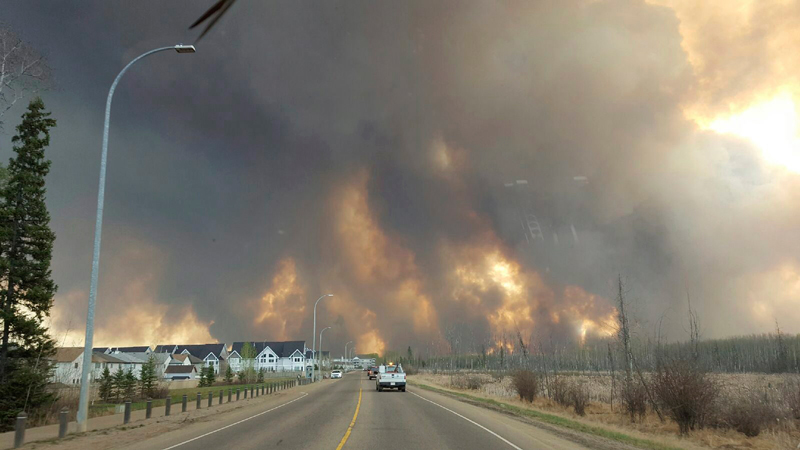
EDMONTON – An assessment of the total financial impact of last spring’s Fort McMurray wildfire is pegging the direct and indirect costs of the blaze at almost $8.9 billion.
The figure includes the expense of replacing buildings and infrastructure as well as lost income, profits and royalties in the oilsands and forestry industries, said MacEwan University economist Rafat Alam.
It also includes early estimates on indirect costs such as environmental damage, lost timber and physical and mental-health treatment for residents and firefighters.
The estimate will go even higher, Alam said Tuesday.
“It’s not fully done yet. More data kept coming and I’m sure it will keep coming in.”
Alam said it can take up to 10 years to get a complete picture of everything that happened and what it cost.
Earlier this year, insurers estimated they’d be paying out about $3.7 billion for damage caused by the blaze which firefighters came to call “the beast.” Alam said that figure is now almost $4 billion.
But that’s only the start, said Alam, who conducted the study for the Institute for Catastrophic Loss Reduction, an insurance industry research group.
“The insured part is only talking about the physical losses,” he said.
“There are other losses like loss of revenue for the provincial government and municipality. There are costs for evacuation. There are costs for rehabilitation. These are examples of other direct costs that are not part of the insurance bureau estimation.”
Using figures from industry and governments, Alam calculated lost oilsands production at nearly $1 billion. Provincial disaster recovery efforts added another $647 million.
Lost labour income totalled $458 million as Alberta suffered its largest one-month increase of employment insurance claims in seven years. Forgone provincial royalties and taxes cost $300 million.
Indirect costs are valued at $1 billion.
Alam said the size of the losses should influence municipal and industrial planners working on ever-growing communities in the boreal forest.
“We are increasing the probability of these catastrophic fires,” Alam said, who added planners failed to learn the lessons of a 2011 fire near Slave Lake, Alta., including incorporating buffer zones.
“None of those things were implemented in Fort McMurray.”
He also pointed out that wildfires are expected to grow in size and intensity as climate change continues to warm up and dry out the forest.
The fire did put some figures on the positive side of the ledger. The Conference Board of Canada estimates rebuilding will add $1.3 billion to Alberta’s economy in 2017.
The Fort McMurray fire destroyed 1,800 single-family homes and numerous other structures and forced more than 80,000 people to leave.
The fire began in a remote forested area southwest of the city on May 1 during a spell of unusually hot and dry spring weather. By suppertime on May 3, the flames were inside the city and all of Fort McMurray was under a mandatory evacuation order.
People fled from their neighbourhoods with the forest ablaze on both sides of the road and ash raining down. Vehicles were bumper-to-bumper on the only route out of town.
Nobody died as a direct result of the fire, although two teenagers were killed in a highway crash.
Residents started returning in early June. Most returned to unscathed homes, but many had nothing but piles of ash inside blackened foundations.
Officials said in December that 350 rebuilding permits have been approved since the fire and construction has begun on 160 new homes.
— Follow Bob Weber on Twitter at @row1960
Note to readers: This is a corrected story. The researcher originally pegged the overall cost at almost $10 billion, but later updated the figure with new information.